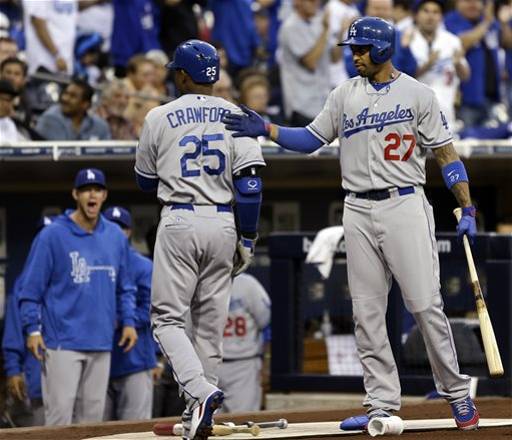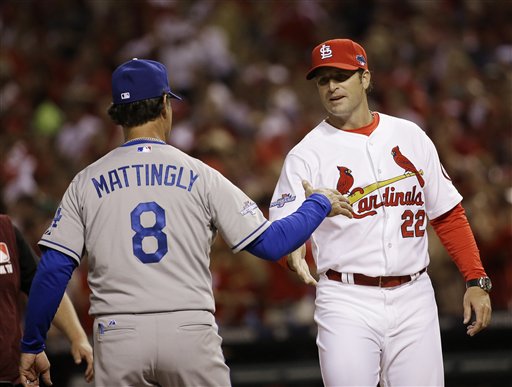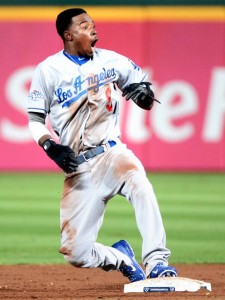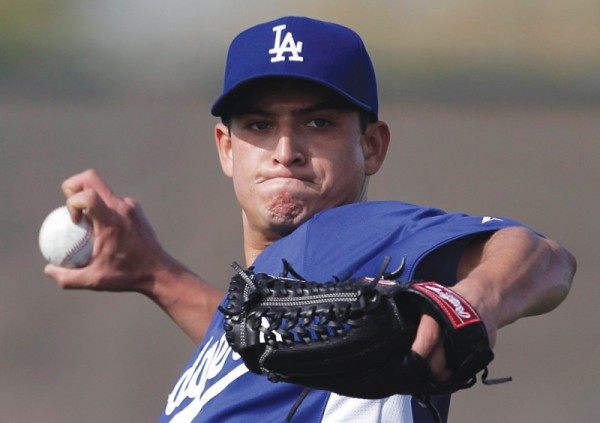
Can Carl Crawford (left) and Matt Kemp (right) be happy under a four-man outfield platoon? The Dodgers might be counting on it. (Associated Press photo)
A couple opinions floating around today about what to do with the Dodgers’ four-outfielder conundrum: 1, Trading Andre Ethier is the most likely route; 2, Keeping everyone is the safest bet.
Maybe there’s another way we can look at the Dodgers stockpiling outfielders. It’s not unlike the strategy used a year ago by Oakland A’s, who entered last season with five viable starting outfielders (Yoenis Cespedes, Coco Crisp, Seth Smith, Josh Reddick and Chris Young).
Since it was the A’s, this personnel strategy was dissected under the market-efficiency microscope, then praised when Young underperformed, Cespedes and Crisp went down with injuries in April, and Reddick took his turn on the DL in late May. None of them were owed the kind of money Ethier, Matt Kemp, Carl Crawford and Yasiel Puig will earn in 2014 — $58.3 million, excluding any contract bonuses — but the A’s still won 96 games, four more than the Dodgers.
Don’t dismiss the integral role that club chemistry played in keeping the A’s outfielders happy with the platoon arrangement. Probably not coincidentally, Oakland recently signed former Dodgers infielder Nick Punto — a chemistry guy, a platoon guy.
With the Dodgers, the market-efficiency prism need not apply. That doesn’t mean that stockpiling outfielders (and starting pitchers, for that matter), hedging against the inevitable injuries, and counting on chemistry to abide in times of health, isn’t a wise personnel strategy worth the time of a team with a $215 million-plus budget.
The A’s walked into their situation more intentionally than the Dodgers, who probably didn’t count on the injuries that added up to 99 outfield starts for players other than their top four in 2013. Heck, general manager Ned Colletti might have traded Ethier, Kemp or Crawford by now if cost and health concerns were not enough to inhibit a rival GM from making a knock-me-down offer.
That hasn’t happened yet. It probably won’t. Whenever a reporter asks Colletti an outfield-related question that begins with “if everyone’s healthy…” his response usually begins with some variation of “do we know that everyone’s going to be healthy?”
So maybe the Dodgers backed into this desirable situation. That doesn’t make it undesirable.
Some bullet points for an Evacuation Day:
Continue reading “Daily Distractions: How the Dodgers might apply principles of chemistry and platooning to their $58.3 million outfield.” »




